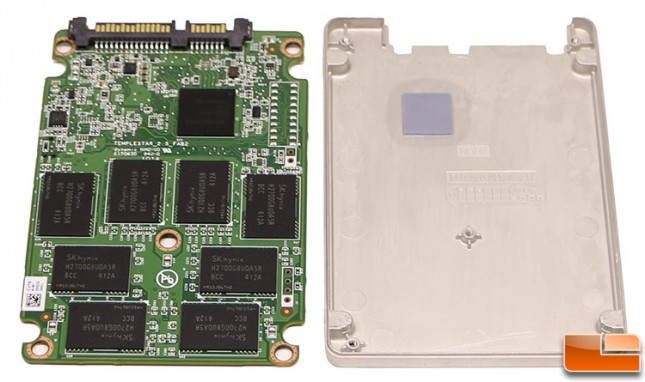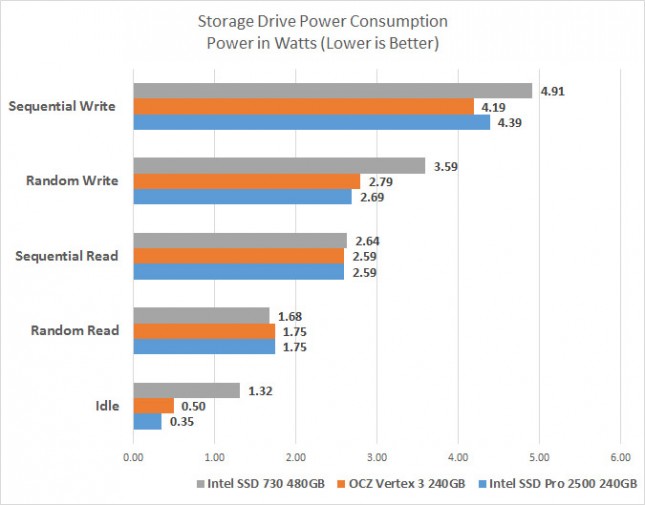Intel SSD Pro 2500 Series 240GB Enterprise SSD Review
SSD Power Consumption Testing

Having low power consumption is important to many enthusiasts and the Intel Pro 2500 Series is aimed at business-class customers that are more than likely concerned about the power draw of the systems running under their management. We measure the power at idle and load power states using both sequential and random read/write test data. We’ll be comparing the Intel SSD Pro 2500 240GB to the OCZ Vertex 3 240GB SSD on our desktop system to see how the SandForce SF-2281 firmware has improved over the years and to see if we could notice a difference with DevSleep as that was not a feature that was enabled in the original SF-2281 design and just recently added with the B2 and newer revisions of that SSD controller/processor.

When it comes to an idle power state we are happy to report that the Intel SSD Pro 2500 240GB SSD does great and used just 0.35 Watts of power. The OCZ Vertex 3 from 2011 used 0.50 Watts, which is about a 43% more power at idle. This just goes to show that manufacturers have been able to greatly improve idle power Most computers are in an at idle for large periods of the day and a very critical bit of information for mobile users. We were a bit shocked that the sequential read and random read power draw was identical, but we triple checked and everything was reporting as such for every test run. When it comes to sequential and random write speeds we saw some slight differences, but nothing to write home about or that was alarming. So, we figured that with the addition of DevSleep and a newer stepping controller that idle power would be improved and we found that to be true. We were hopeful that load power would be slightly different due to the different MLC Nand brands and the manufacturing processes that they were made on, but at the end of the day both were very similar.
The Intel SSD 730 480GB drive is currently the flagship enthusiast-class consumer drive by Intel and you can see that there is a big difference between the flagship drives in the Pro line and the consumer series. The Intel SSD 730 doesn’t support any low-power states and therefore the idle power is drastically higher than the other SSDs in the chart. The read operations of the drive aren’t too far off from the others, but the write operations are fairly higher. Not all SSDs are the same when it comes to power efficiency.
